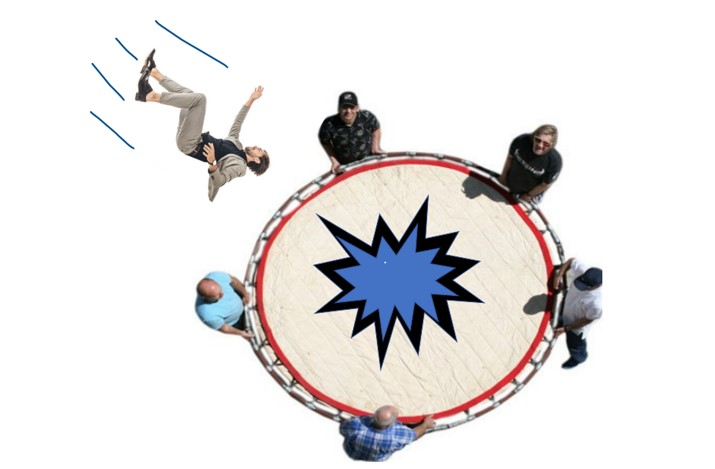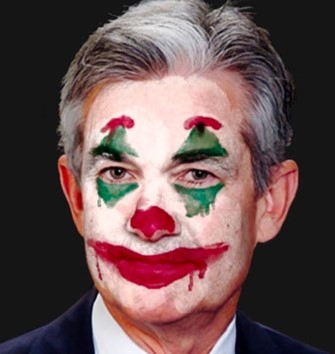
Photo: Wikimedia commons
By Michael O’Neill
Figure skaters know all about landings. A soft landing is one where they land on their bum while a hard-landing is of the face-plant variety. Both hurt.
The same goes for economic slowdowns. They can be soft-landings, recessions, or even depressions but they all cause pain.
And to paraphrase virtue-signalling central bankers, “we are acutely aware that soft-landings, recessions and depressions imposes significant hardship as it erodes purchasing power, especially for those least able to meet the higher costs of essentials.”
Many analysts and economists are forecasting that 2023 will start with a mild recession in Canada. RBC economists say that higher interest rates have meaningfully slowed economic growth expectations and that consumers are feeling the pinch. TD analysts are predicting an 80% chance of a Canadian recession while Scotiabank thinks a mild recession will be closer to growth just stalling.
The Bank of Canada may be trying to make sure the recession forecasts are accurate. They surprised about half of the analysts when they hiked the overnight rate by 50 bps on December 7. They justified the move because of stronger than expected Q3 GDP growth, the economy operating with excess demand, and a very tight labour market.
The 50-bps hike lifted the overnight rate to 4.25%, which is what many forecasters believe is the “terminal” or peak rate for this hiking cycle.
At first blush, the monetary policy announcement sounded hawkish but upon further reading the hawks were channeling their inner dove.
That’s because the statement suggested they were done.
It said “Governing Council will be considering whether the policy interest rate needs to rise further to bring supply and demand back into balance and return inflation to target.
They don’t fear the reaper or a recession. They expect growth to stall for the first half of 2023 and seem to believe that the worst is over for inflation. They are looking at the inflation glass as half-full rather than half-empty saying “Three-month rates of change in core inflation have come down, an early indicator that price pressures may be losing momentum.”
They threw shade at consumers and businesses for the inflation problems saying that as long as those groups “expect inflation to be above the target, the greater the risk that elevated inflation becomes entrenched.”
The BoC never mentioned the role the Federal government’s covid-relief programs played in exacerbating inflation gains. It was substantial.
Scotiabank’s Chief Economist Jean-Francois Perrault argues that 125 bps of BoC tightening is a result of federal pandemic relief measures which include, the Canada Emergency Response Benefit, the Canada Recovery Benefit, the Canada Wage Subsidy, and the Canada Rent Relief Program.
Many analysts and the Bank of Canada believe the worst is over for inflation and it will drift lower but won’t be close to the 2.0% target until 2024.
That may be true, but consumers will still be hurting. Mortgage payments will remain elevated and food prices will stay high. Rental prices may fall after unemployed workers get turfed. The pain will be exacerbated as higher interest rates and the ensuing economic slowdown increases unemployment.
In this high stakes game, jokers are wild, and the Fed is the joker.

Source: Bitcoin magazine
The Fed is expected to announce at 50 bp rate hike December 14 while releasing an updated Summary of Predictions. A slew of recent US economic reports reflects a more robust economy than previously expected which raised fears of a more aggressive rate hike next week.
Traders spent the last month flipping between Fed pausing and Fed hiking scenarios. Not Fed Chair Jerome Powell. He had both feet planted in the rate hike camp in a speech a week ago.
Powell said “Despite the tighter policy and slower growth over the past year, we have not seen clear progress on slowing inflation. He also warned that “the ultimate level of increase will be somewhat higher than thought at the September meeting.”
At the time, the median fed funds projection for 2022 was 4.2 and 4.6% in 2023. The question is “how many bps is “somewhat?” Let’s assume its in the 0.25%-0.50% area. That would bring the terminal rate to 5.10%
If you listen to St Louis Fed President James Bullard, rates need to be above 5.0% for all of next year and 2024. New York Fed President John Williams believes rates need to be in restrictive territory for some time.
The Fed’s rate hike program is still in gear, while the BoC has shifted to neutral and that can’t be good for the Canadian dollar.
USDCAD is underpinned in the 1.3300 area by safe-haven demand for US dollars as global recession risks rise, by divergent Fed and BoC monetary policy outlooks, and from fears CAD/US interest rate differentials will widen. The topside may be limited to around the 1.3850 area if an expected rebound in oil prices occurs, once winter takes hold in Europe, and Chinese buyers return.
The Canadian economy may have a soft landing, but it will still be painful for the Canadian dollar.





